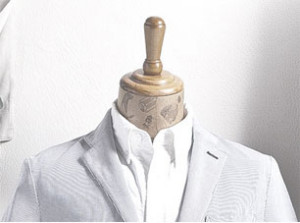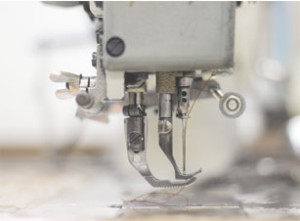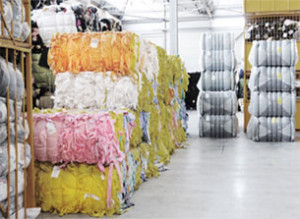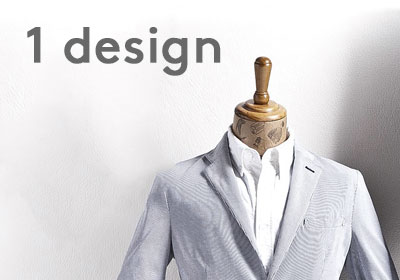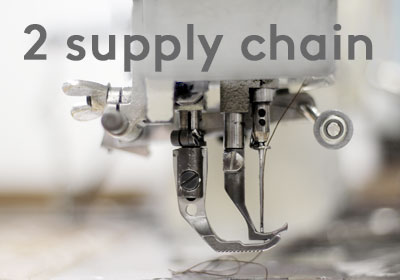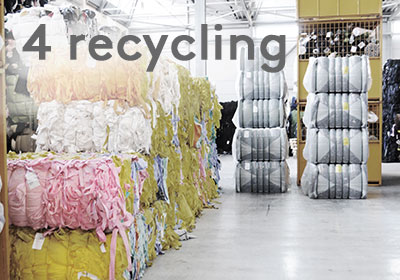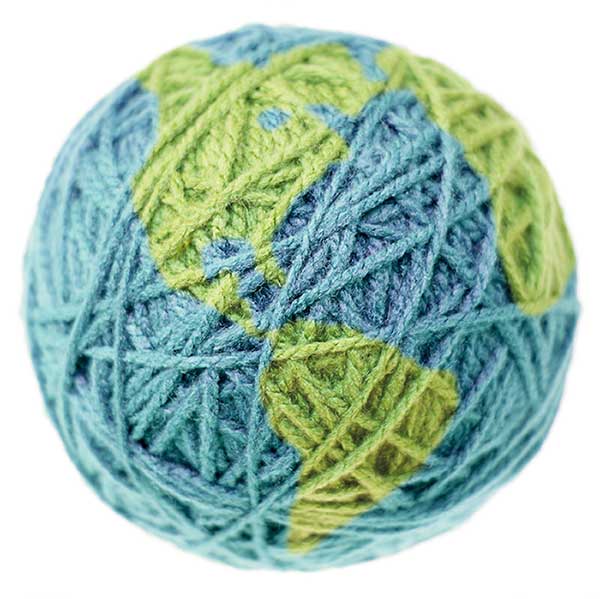
it is time for a change
Current usage of our planet’s resources for the fashion demand is not realistic. A transformation of current system is needed into one that is circular based and requires less from our planet’s resources. A new system that is positive and where all actions is designed to have minimum environmental impact.
the research
Our research focus is on Circular Economy, and how to enable today’s linear industry to transform into a circular sustainable industry. With a system perspective, we focus uniquely on the bigger picture and the interaction between the elements in the system. With an inter-disciplinary approach, the program attempts to understand and proceed on research on the most relevant areas within the system that needs to change.
The program is organized into four themes:
We explore and evaluate the environmental potential of the design and user potential of short-life vs. long-life garments to find the most suitable choices for the transformation into a textile circular economy for different types of garments in order to develop recommendations, guidelines and tools for how to design for resource circularity.
We identify what necessary actions in textile and garment supply chains will enable circular economy and deliver guidelines for governance on how to transform to and sustain a circular textile supply chain.
We make recommendations on how to encourage sustainable consumer behavior and to increase user engagement in sustainable consumption. Specifically recommendations for achieving an increased degree of services for extended life of garments, reuse, and second hand consumption will be included.
We develop knowledge on recycling methods and impact of post-consumer textiles to provide guidance on necessary steps to enable sustainable textile recycling.
the research
Our research focus is on Circular Economy, and how to enable today’s linear industry to transform into a circular sustainable industry. With a system perspective, we focus uniquely on the bigger picture and the interaction between the elements in the system. With an inter-disciplinary approach, the program attempts to understand and proceed on research on the most relevant areas within the system that needs to change.
The program is organized into four themes:
1
how to design for circular economy?
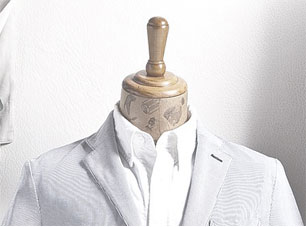
Designing Fast and Slow Materials, Products, Systems and Guidelines for the Circular Economy
Designing for the Circular Economy requires a proactive and embedded design approach, where materials are designed with end-of-life recovery in mind at the outset. Designing to enable fully joined cycles of material use is the ultimate aim, but the ‘speed’ of the cycle also needs to be considered in order to make informed and appropriate design choices.
The research will be based around the framework of ‘short-life fashion’ and ‘long-life fashion’ and consider how we can best design materials and products which work with the current models for fashion consumption, how this can be measured, and then communicated to designers.
By working at these opposing ends of the fashion spectrum we will be able to clarify the specific material and design challenges faced by different segments of the industry.
theme leader: Kate Goldsworthy
goal:
guidelines for short-life and long-life design approaches for cyclability, Illustrated by materials and garment prototypes
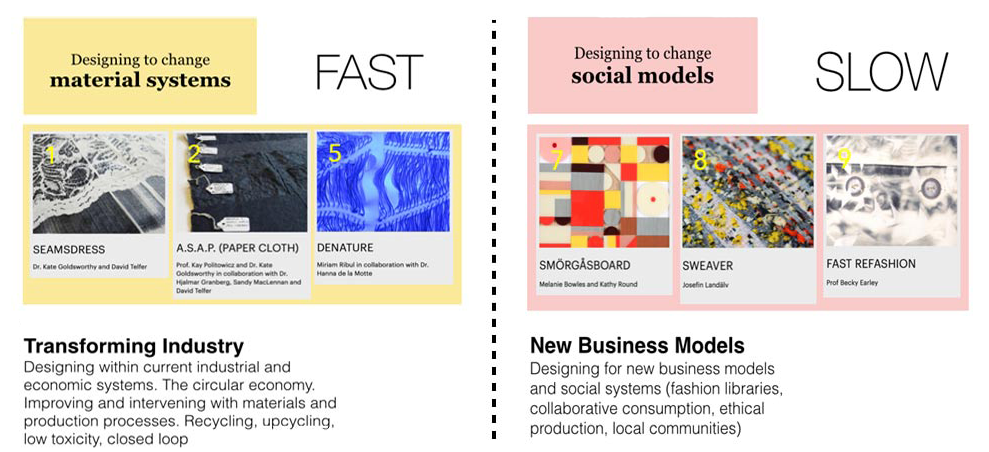
objective 1 – designing for short-life garments

design & material review
Literature & practice review in ultra-fast textiles, recycling processes, business models for short-life garments concepts.

design concepts & textile sampling
New material samples based on insights from the design & material review. Generate new knowledge through material understanding to design scenarios for garment prototypes.

short-life garment prototypes
Exploration of design concepts through prototyping and detailed scenarios. This will allow LCA and other analyses to be conducted and guidelines to be drafted.

life-cycle assessment
LCA will reveal where gains and losses might be made for each product scenario.

recycling models
Present key factors that support recyclability of paper based nonwoven textiles as paper or board.
objective 2 – designing for long-life garments

design & material review
State of the art on long-life design and durability, including business models and materials research.

design concepts & textile sampling
New material samples based on insights from the design & material review. Generate new knowledge through material understanding to design scenarios for garment prototypes.

long-life garment prototypes
Exploration of design concepts through prototyping and detailed scenarios. This will allow LCA and other analyses to be conducted and guidelines to be drafted.

life-cycle assessment
LCA will reveal where gains and losses might be made for each product scenario.

business models
Identification of business barriers and opportunities of circular economy models, within the design scenario of the short/long-life spectrum.
objective 3 – guidelines and tools

circular transitions conference
State of the art in design for the circular economy for fashion. Insights into what circular design strategies and approaches that currently are explored and employed globally.

guidelines & design tools for circular design
Producing quantitative and qualitative guidelines for creating a circular fashion industry in Sweden.

exhibition of design prototypes
Presenting design prototypes, materials and guidelines
2
how to promote a more sustainable circular supply chain?
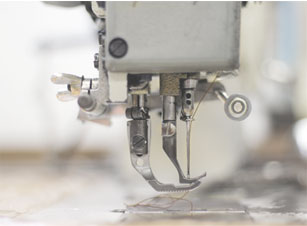
Development steps with the largest environmental improvement potential is in focus for the supply chain: 1) more sustainable fibers, 2) less energy intensive yarn and fabric production, 3) more sustainable wet treatment and 4) production of garments with longer life span.
The Theme’s will provide guidance for how the Swedish fashion industry can radically reduce the carbon emissions, water footprint, and use of harmful chemicals.
The cross-disciplinary approach will be used in order to use all available supply chain related tools in terms of business models, policy tools, consumer communication, and design for sustainable manufacturing, business and technology development.
Theme leader: Sandra Roos
goal:
promising strategic options and recommendations towards circular supply chain
objective 1 – sustainable fiber options

potential in sustainable textile fibers
Comprehensive evaluation on new promising sustainable fiber materials including technical and chemical properties.

samples of new bio based fiber materials
Product samples that allows people to feel and smell the materials.

LCA on new sustainable fiber alternatives
LCA to enable comparability and knowledge of differences between recycled, bio based, paper based compostable and conventional fibers. The results provide sustainability records for the “database”.
objective 2 – sustainable textile production technology

development of sustainable textile technology
Acquire knowledge on the feasibility of technologies for sustainable textile production in terms of scale-up, technical quality of product, life cycle performance etc. Techniques: spindye, plasma pretreatment, increased cutting length of regenerated fibers, digital printing, paper based fabrics etc. Also the potential of increased automation and IT-solutions in general.

samples of sustainable fabrics
Demonstrating what is fiber properties and fabric construction properties. Assess yarn spinning techniques, yarn thickness, weave/tricot density, finishing etc as well as chemical structure of the fiber. Technical evaluation includes use phase properties such as drying energy.

web tool – a database of options and impact
Create a Green Textile Guide, a “database” that guides on options for sustainable textile technology. To create add-on, e.g. the Swedish quantitative Ted’s TEN advices.

updated LCA: ’five garments – sustainable futures’
Enables to study the national-level impact-reduction potential of the short-life and long-life garment prototypes (theme 1), new sustainable fibers and production technologies (theme 2) and new recycling technologies (theme 4).

production location impact & differences
Assess the business model landscape for local production including opportunities and barriers. Focus is on recycling, service for prolonged active life and gains of networking of local manufactures.
objective 3 – supply chain governance

business model innovations
Study of alternative business models that encourage circular textile flows. Map decision makers and structures, incentives, aspects of innovation and improvements. Include clarity on elements that are crucial for success and acceptance of alternative business models in the value chain from a fashion company’s perspective.

politics and policies in the textile life cycle
Acquire new knowledge on the possibilities for Swedish policy-making to influence the textile production processes that occur outside the Swedish and European legislative area. Partner in international policy incentives or in development of standards for chemicals use can be another.
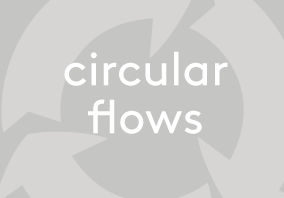
screening & developing circular textile flows
Screen voluntary initiatives that involve leading Swedish fashion brands and other actors, who aim creating conditions for prolonging the life of textile fiber and achieving sustainable circular textile flows. Includes waste management strategies.

communication guidelines
Practical guidelines for a sustainable circular supply chain, in collaboration with the User (theme 3) and Recycling (theme 4). The concept of “back-casting” will be used.

design for manufacturing (DfM)
Present and enable understanding of the concept Design for Manufacturing (DfM), from the sustainability perspective in the Swedish fashion industry.
3
how can users contribute to a more sustainable fashion?

Explore how to influence sustainable consumption – i.e. making more environmentally or socially friendly fashion consumption choices, like buying more sustainable product alternatives or engaging in alternative forms of production and consumption processes.
Three research areas of interest from a consumer point of view:
The user perspective: how to make consumers behave more sustainable
The policy perspective: helping consumers to identify sustainable choices and showing sustainable behavioral alternatives
The business perspective: business models for reuse, upcycling and sharing
Theme leader: Claudia Rademaker
goal:
strategies on how to change consumers awareness, mindset and behavior towards sustainable consumption
objective 1 – the USER perspective: how to make consumers behave more sustainable

quality of life and sustainable fashion consumption
Identify the mechanisms behind the relationship of wellbeing and sustainable fashion consumption and provide policy & business recommendations of how to promote sustainable consumption through wellbeing as a motivational factor. Field surveys in four countries.

cross-country comparison of new business models among consumers
Identify potential of new business models (collaborative consumption) from a consumer point of view. Including understanding of geographic differences on new business models.

consumer perceptions to fast & slow fashion
On comfort performance for new sustainable fibers. Understanding on consumer acceptance and perception in relation to fast and slow materials. Feeds into theme 1 to facilitate material design. Feedback from patients/public users to producers.
objective 2 – the policy perspective

social marketing toolbox
Develop and test social marketing toolbox that aim to change consumer mindset and behavior, and stimulate sustainable fashion consumption. Based on insights from consumer quality of life survey.

policies to promote consumers sustainable consumption
Identify best practices and provide recommendations for policies consumer require consuming more sustainable. Evidence-based consumer policy implications.

governmental policies with impact in fashion consumption
Report alternatives for governmental support to make an impact in fashion consumption.

policies for reuse, collective use and prolonged life of textiles
Present which policies that have potential for promoting business models and social initiatives that extend textile products active lifetime. List their potential and risks, how they complement/conflict with one another and with existing policy.

impact & recommendation for policy measures
Present potential environmental, social and economic benefits and impacts of selected policies which have the potential for promoting business models and social initiatives which extend textile products active lifetimes.
objective 3 – the BUSINESS perspective

new business models in a sharing economy
Analyze user perception of collaborate fashion consumption and services for repair and upgrading. Explore the tensions regarding user engagement in collaborative consumption. Includes reflections on whether and how upcycling can mode from the margins to the mainstream of the fashion industry.

barriers & opportunities in local production
Analyze qualities associated with local manufacturing which still remains a niche concept in the fashion industry. Will users consider local manufacturing as being superior/inferior quality, and will they make couplings to non-fashion issues, e.g. local employment?

learnings from business in reuse, collective use and prolonged lifetime
Assess factors of success and failure for initiatives and business models promoting reuse, collective use and prolonged life time of textiles, both in Sweden and elsewhere.

effects of exported textiles for reuse
Highlight, discuss and as far as possible estimate the effects on domestic economies in developing countries due to import of used textiles.

market dynamics, structures and policy interventions
Analyze instruments, actions and initiatives for making reuse of textiles more mainstream, followed by identification of strategies for increasing demand for and use of textiles for reuse, and recycling among relevant industrial users.
4
how to increase textile fiber recycling?
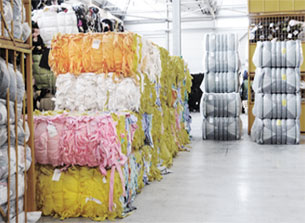
Explore of post-consumer cotton and polyester, how cotton and polyester mixtures can be separated and recycled. Includes recycling free of chemicals and affects by Dye pigments.
Merge ongoing work on automatic sorting technologies to speed up the process for finding effective and economically viable solutions.
Design of textiles which are better suited for recycling i.e. by avoiding certain fiber blends will also be a key element of work and will assist in optimizing sorting and subsequent recycling of textile waste.
Explore initiatives that increase collection rates of used textiles, include mandatory and voluntary Extended Producer Responsibility (EPR) systems. The work will continue the project for the Nordic Council of Ministers and investigate the advantages and disadvantages, and various design options further.
Theme leader: Hanna de la Motte
goal:
recommend promising recycling process for cellulose and polyester blend and establish these in textile & fashion industry
objective 1 – recycling of cotton blends

separation poly-cotton and de-polymerization of polyester
Finalize phase 1 research work on deplymerization of polyester from polyester/cotton blends using phase transfer catalysts. Includes solutions and yields necessary for successful separation of polyester and cotton in a recycling process.

cotton activation, pre-treatments and dissolutions
Optimization of the potential recycling process. Find the best pre-treatment and dissolution combination for cotton fibers, for a successful recycling process.

process walkthrough – from small scale to large pilot with partner
Develop of a possible process route for poly-cotton separation and regeneration of cotton (spinning to cellulosic fibers), Lab-scale.
Upscale process walkthrough of polycot ton regeneration, includes partner involvement and engagement, produce textiles in the factories using our recycled materials. Large scale.

recycling possibilities for cotton
Examine cotton properties and how they can be enhanced to facilitate recycling into textiles, or higher value materials.

dye aspects – impact on fibers, de-dyeing and environment
Analyze impact of dye on physical properties when regenerated cellulose fibers, and define actions that needs to be taken if dyes are affecting the fibers in the process.
Study de-dying efficiency of different textile waste groups, environmental impacts of introducing a de-dyeing stage in a demo-plant, and compare different de-dyeing treatments.
objective 2 – polyester recycling

alternative de-polymerization method polyester
Explore another possible depolymerization method, based on sustainable catalysts, for fiber-to-fiber cycling of textiles.
objective 3 – recycling feasibility

two LCAs on recycling systems for 1) cotton blends & 2) polyester
LCA on recycling systems for cotton blends, including identification of environmental potential vs conventional end-of-life treatment and identification of criteria for environmental optimization. LCA on recycling system for polyester.

guidance on how to design for recycling
Recommendation on material blends preferable from use and wear perspective, and anchor the results of theme 4 with the broader fashion industry, and the need to establish the possible recycling on larger scale.

new sorting technology for textile materials
Provide summary of most possible sorting technologies in accordance with the program’s process. Understanding of development on automatic sorting technology.

EPR assessment
Develop scenarios for a potential Swedish EPR system for textiles; either as a voluntary collective EPR or as a mandatory EPR system.

promotors of fiber-to-fiber recycling
Identify critical aspects in design for fiber-to-fiber recycling of textiles; including bottle-necks and their implications for improved design of textiles. Includes suggested areas for policy measures.
Impact assessment of policies that promote Reuse and fiber-to-fiber recycling of textiles.
join the consortium
New partners are welcome to contribute to, and profit from the research.

